|
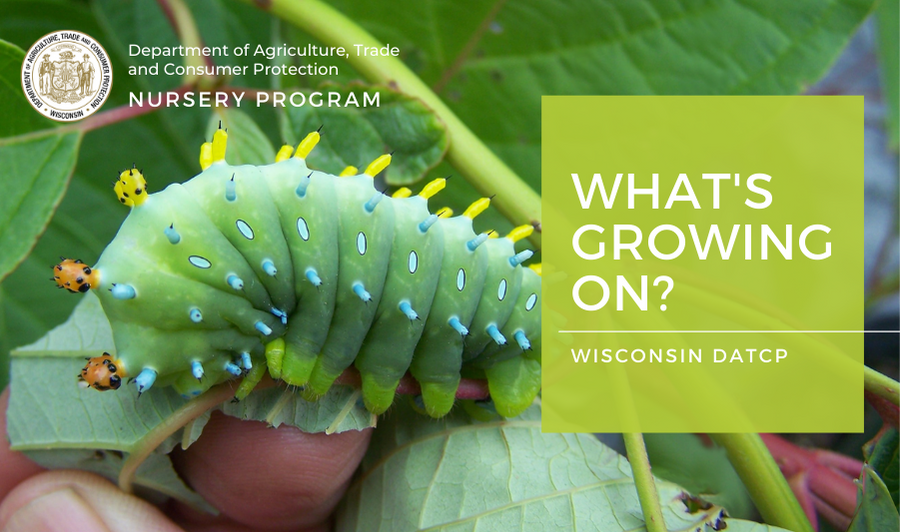 _____________________________________
Dear Wisconsin nurseries, Christmas tree growers, and gardeners:
Hopefully you've all been able to take full advantage of the extended pleasant fall weather. Take a moment now to read through a few updates from the DATCP nursery program and send any feedback, questions, or ideas for future e-news updates to datcpnursery@wisconsin.gov.
Having trouble viewing this email? View it as a Web page.
_____________________________________
|
|
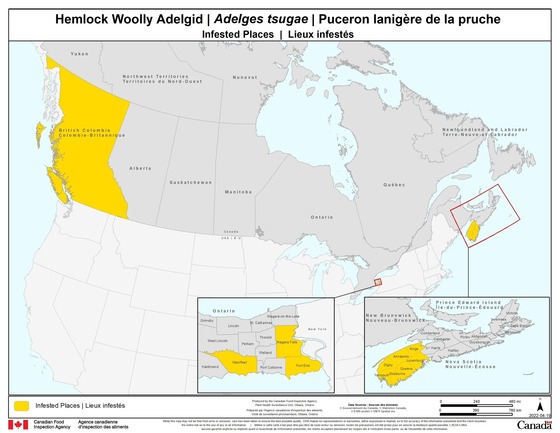
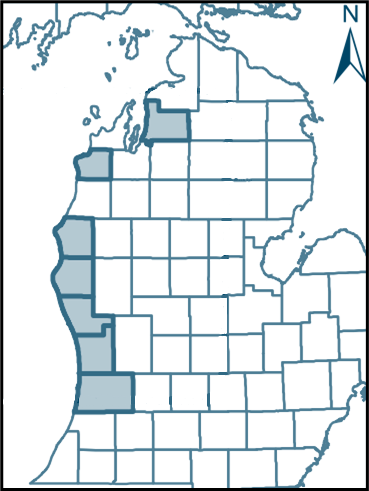
Native to Asia and western North America, Hemlock Woolly Adelgid (HWA) is an invasive aphid-like insect that attacks all species of hemlocks, killing millions of eastern and Carolina hemlocks in eastern states where it has been introduced. Infested trees have white woolly masses resembling tiny cotton swabs on the undersides of branches at the needle bases. The tree crown turns from green to grayish when severely infested with HWA. Infestations on susceptible hemlocks lead to needle loss, branch dieback, and tree death in as little as four years. In the western United States and in British Columbia, Canada, western and mountain hemlocks have coevolved resistance to HWA, although these species can still vector it to new areas. Because HWA adults are immobile, and immature crawlers only move short distances on their own, it is likely that it spread to new areas on infested nursery stock, firewood, or logs. For this reason, Wisconsin’s exterior HWA quarantine (ATCP 21.16) prohibits the movement of hemlock nursery stock and other products from all infested areas without a compliance agreement. Once introduced to new areas, HWA can establish and build populations quickly, as their all-female populations reproduce asexually, lay 100-300 eggs per individual, and complete two generations per year.
Although HWA has not been found in Wisconsin, it has unfortunately become well-established nearby in western lower Michigan and eastern Ontario. In the state of Michigan, there are currently seven western counties lining the east coast of Lake Michigan infested with HWA. These include Ottawa County, where HWA was first detected in 2010 and thought to be eradicated, before subsequent detections have been ongoing since 2015; Allegan in 2013 and 2017; Muskegon in 2015-2016; Oceana in 2017; and Antrim (59 acres), Mason (3,950 acres), and Benzie Counties (1,132 acres – including portions of Sleeping Bear Dunes National Lakeshore), known to be infested as of May 2024. Efforts to control the pest include a quarantine making it illegal to move hemlocks out of the infested area, and chemical treatments, including over 63,000 hemlocks that were treated for HWA across more than 3,000 acres in 2023. Surveys are available for free to Michigan landowners and are supported by the US Forest Service and the Michigan Invasive Species Grant Program.
In eastern Ontario, HWA was initially detected in 2011 on eastern hemlock on two residential properties in Etobicoke, where it was thought to have been eradicated. Unfortunately, HWA was later detected in forested areas near Niagara Falls in 2013, 2015, and 2019; in Wainfleet and Fort Erie in 2019; Pelham and Grafton in 2022; and in Hamilton and Haldimand County in 2023. In addition to Ontario, introduced populations of HWA have been detected in several areas of Nova Scotia, including Halifax, in 2023. Ongoing survey efforts on private and public lands are being conducted in Canda to increase early detection of HWA outside of known infested areas.
For those who plant trees in the fall, now is a good time to check recently purchased eastern hemlock nursery stock, as well as larger hemlocks in forests. HWA surveys are optimally conducted during fall and winter when HWA breaks dormancy and actively feeds, making it easy to spot, appearing as white, woolly cotton ball-like masses on the undersides of hemlock branches. During other times of the year, HWA is hard to see with the naked eye when dormant nymphs resemble tiny black ovals. Since this pest is slow-moving and in concentrated areas, surveys allow swift action to be taken to eradicate HWA with highly-effective chemicals like imidacloprid if detected soon after introduction. Based on detections in Michigan and Ontario, the moderate climate near Lake Michigan in southern Wisconsin may be at greatest risk, as winter temperatures may not get low enough control HWA.
Report suspected infestations of HWA in Wisconsin to the DATCP Pest hotline at (866) 440-7523 or datcppesthotline@wi.gov, and visit our website for more information.
|
_____________________________________
|
|

A PPA 7721 funded survey looking at the cut flower pathway was conducted for the first time in Wisconsin in 2024. The survey targeted three invasive moth species: old world bollworm (feeds on corn, small grains, soybeans, peppers, tomatoes, and other crops species), silver Y moth (feeds on corn, carrots, grapes, cherries, wheat, and other crop species) and cotton cutworm (feeds on cotton, strawberry, rose, apple, soybean, and other crop species). All three pests have the potential of spreading into Wisconsin through the importation of cut flowers.
Traps for each of these three species were placed inside five different wholesale businesses that import cut flower products in five southeastern Wisconsin counties. The survey began in early May and concluded early October. All samples have been collected and processed, and none of the three target species were detected. DATCP plans to repeat this survey for a second year in 2025.
|
_____________________________________
|
|
|
Nursery stock in a greenhouse | DATCP K. Jerabek
Nursery and Christmas tree licenses for this growing season (LY2025) will expire on February 20, 2025. Expiration notices to renew your license for the next growing season (LY2026) were emailed on November 13th. Paper notices will also be mailed out at the end of the month. Please contact us if your email or address has changed since your last renewal.
License renewals can be completed online by using the MyDATCP portal. If you have never used the online license portal, a PIN will be located on your expiration notice so you can register for a MyDATCP account. If you need assistance getting into your account, contact datcpnursery@wisconsin.gov or (608) 224-4574.
Renewing online is an efficient way to update location information, contact information, and sources of plant materials without having to mail in a paper application. Also, once your license is issued, you have the ability to print your license certificate from your computer. No need to wait for the mail!
If you are no longer in business, or if you do not plan to sell perennials next year, please let us know so we can close or suspend your license. This avoids any compliance actions, which may occur for entities who fail to contact us or renew by the February 20, 2025 deadline.
Tips and Reminders:
- Allow pop-ups from MyDATCP.
- Only one tab of MyDATCP can be open at a time.
- If you have multiple license types, they each need to be renewed individually; but you can pay for them all at once by accessing your invoices from the "My Invoices" tab of MyDATCP.
- Watch the video tutorial to walk you through the online renewal process.
- Renew your nursery license before February 20 to avoid the 20% late fee, and to check this off your busy to-do list!
For more information, email DATCPnursery@wi.gov, call (608) 224-4574, or visit the Nursery and Christmas tree licensing webpage.
_____________________________________
|
|
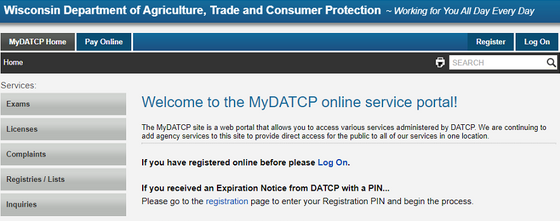
Wisconsin Seed Labeler License expiration notices for 2025 license renewals were mailed out the first week of November 2024. If you are a licensed seed labeler, you should have received a mailed notification via USPS followed by an email (if your email address is active and correct) with the expiration notice attached.
New this year: you can renew your license and pay online by following the instructions in your notification. On the notice are instructions to access our new online licensing and payment system, MyDATCP. Here are a few tips to easily renew and pay online:
- Use a supported browser - Google Chrome, Microsoft Edge, or Safari. MyDATCP is not compatible with Firefox.
- Allow pop-ups from MyDATCP.
- Only one tab of MyDATCP can be open at a time.
- A unique email (USER ID) must be used for each unique Legal Applicant.
- Once registered on MyDATCP, users can access and print their own license certificates once they’re issued.
- Note that in this new licensing system, you will have a new license number.
This renewal process is different than in years past. All your information that was previously submitted on the paper applications can now be accessed online by registering for your MyDATCP account as outlined in the notice. You only need to register for MyDATCP once; after that, you'll be able to access all your online licenses with the department.
As in past years, your current license expires December 31 of the current year. Late renewals are subject to a 20% late fee.
If you have multiple seed labeler licenses, they each need to be renewed individually, but you can pay for them all at once by accessing your invoices from the My Invoices tab of MyDATCP.
_____________________________________
|
|
|
Nov. 19, 2024: IPM for Arborists and Foresters
Dec. 10, 2024: Deadly Oak Diseases
Jan. 14, 2025: Trees for Bees and Other Pollinators
Jan. 28, 2025: Reducing Pests in Schools Through IPM
Feb. 11, 2025: IPM for Four Key Greenhouse Pests
Feb. 26, 2025: Getting to the Root of the Problem: Myths About Urban Trees and Soil
Mar. 19, 2025: Picking Up Ticks: New Threats, Precautions and IPM Solutions
April 22, 2025: Promoting Pollinators Through Plant Selection
May 13, 2025: Protecting the Public from Illegal and Unregistered Pesticides
_____________________________________
|
|
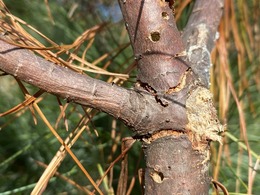 White pine weevil exit holes on white pine leader in Waushara Co. | DATCP L. Meils
|
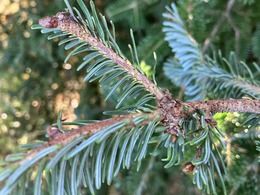 Spruce budworm feeding damage on fraser fir in Polk Co. | DATCP K. Jerabek
|
|
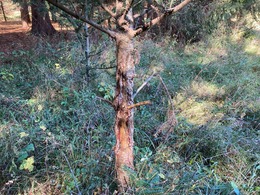 Buck rub damage to fir in Washington Co. and thruought the state | DATCP G. Meysembourg
|
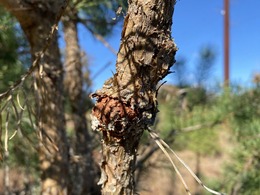 Pine gall rust on scotch pine in Juneau Co. | DATCP image
|
|
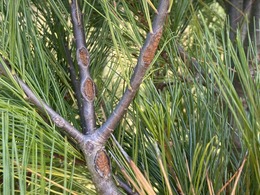 Hail damage to white pine in Taylor Co. | DATCP image
|
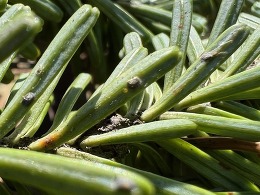 Hemlock scale on fraser fir in Waushara Co. | DATCP L. Meils
|
|
|
_____________________________________
|
|
|
|
|